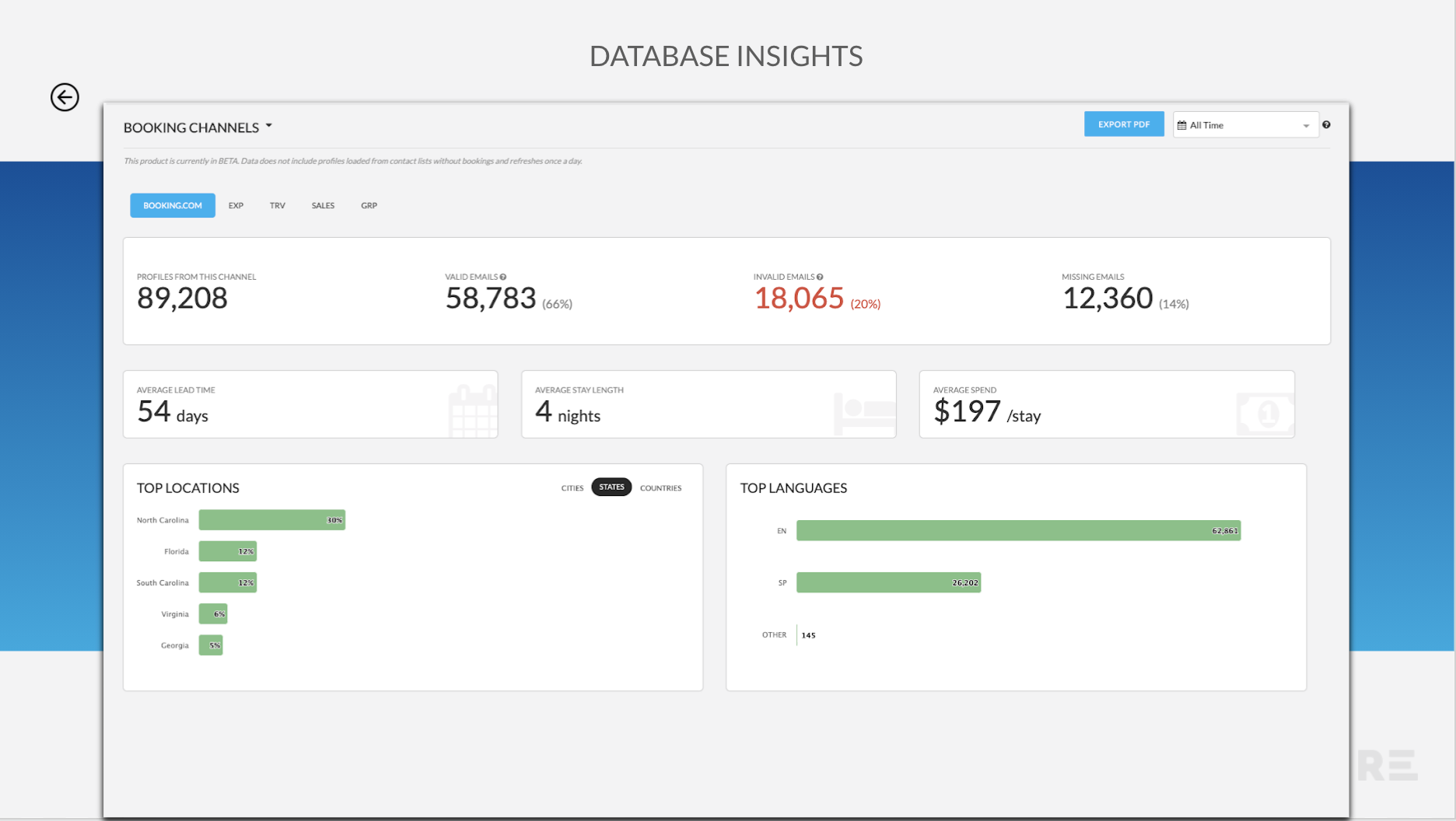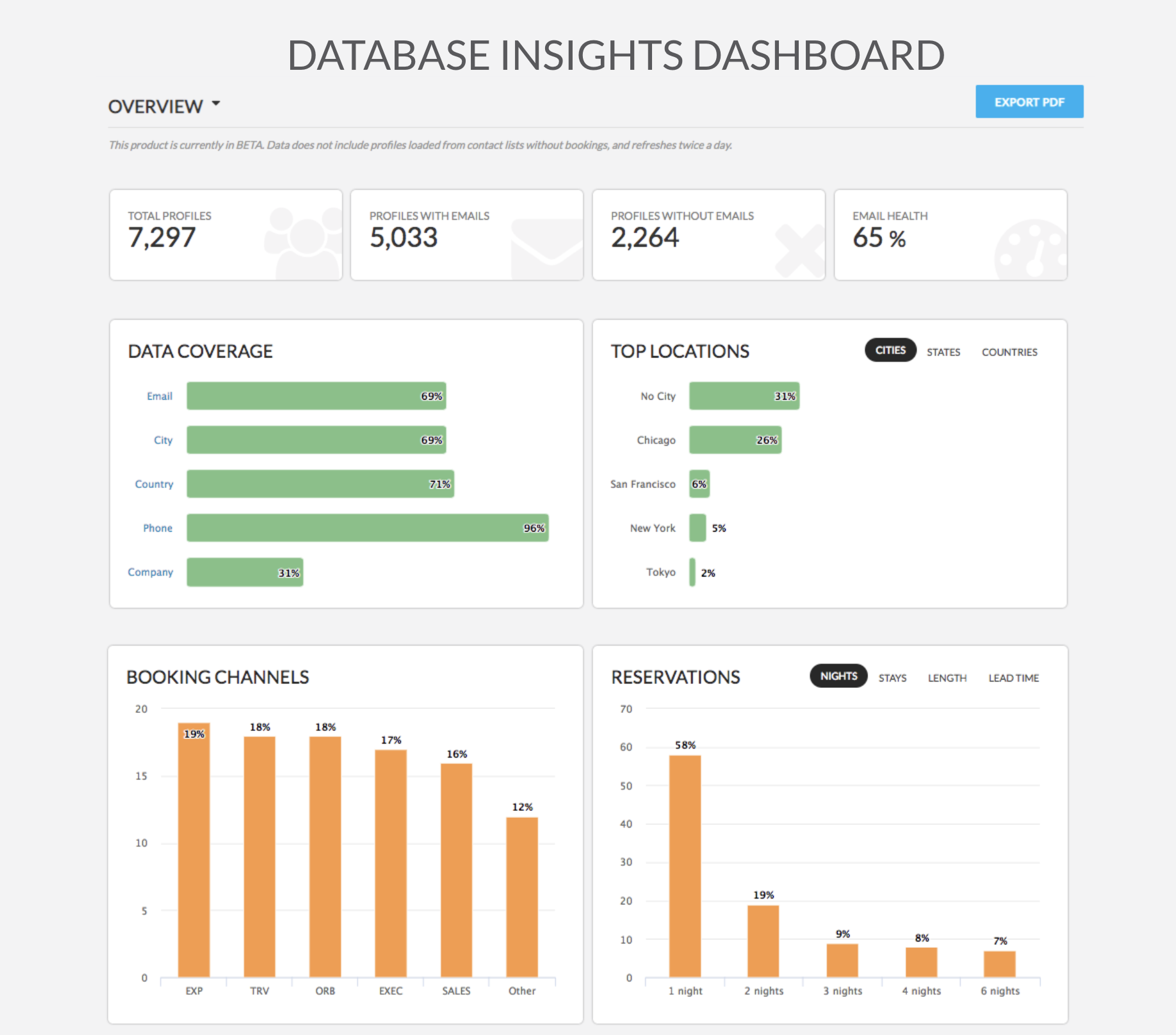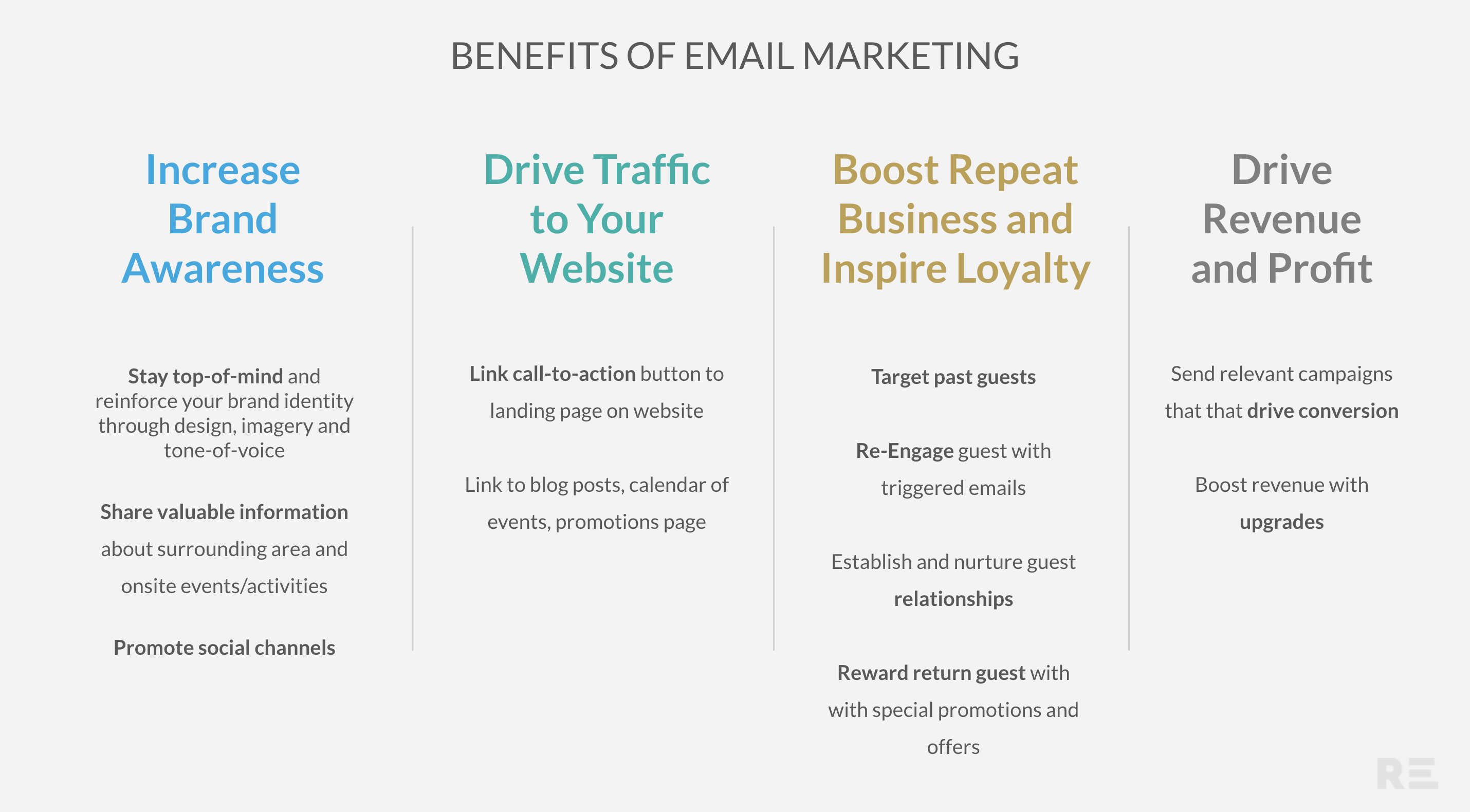Importance of Email Marketing Revenue Attribution
Written by Anisha Yadav, Sr. Director, Customer Success – North America, Revinate
Edited by Laurie Pumper, Communication Director, HEDNA
“If you can’t measure it, you can’t improve it” – Peter Drucker
Measuring results is key to setting a baseline of performance. Effectiveness tracking drives Return On Investment.
Email marketing is one of the most effective digital marketing channels. All industries use Email, and email usage continues to grow.
This brings us to the importance of email marketing revenue attribution. How can hospitality adopt email marketing to:
- drive revenue across channels
- connect through the guest’s lifecycle
- across market segments
Revenue attribution is the function of assigning revenue to campaigns within your marketing program. There are two important components:
- Touchpoints: The point of contact between a buyer and seller to exchange information or provide a service. In email marketing, it’s usually an open or a click. Within hospitality, the touchpoints are the guests’ or prospect bookers’ interaction with the email campaign:
- the action of opening a hotel campaign
- clicking on the “Book Now” Call To Action
- interacting with the booking engine after clicking on the email
These touchpoints can happen through the guest life cycle of engagement with a hotel.
- Lookback windows: The time between a guest’s initial interaction with one of your touchpoints and their conversion. In the hospitality industry, the lookback window is generally longer as customers take longer to make a reservation. Email marketing lookback also tends to be longer than other levers like retargeting. (users who visited your site further back in time are less likely to return and convert).For the hospitality industry, using a 30-day lookback window is a standard to measure email marketing campaign performance.This is a lookback based on “last interaction” of the guest with the campaign within 30 days of receiving it.
How do you know if your email marketing campaign is working?
When looking at hospitality, email marketing KPIs translate into:
- Campaign engagement: Open %, Click Through Rate %
- Generation of revenue, room nights across channels
- Web traffic
- Any other desired impact as a result of the CTA
How do you adapt the email marketing attribution model to your hotel’s revenue strategy?
The building blocks of excellence in Marketing Return-On-Investment measurement are:
- Clear KPIs: Define clear objectives that align to the revenue strategy. This will help commit investment, and define success against goals. For example:
- KPI: Increase direct channel mix by x% compared to Last Year via consistent guest life cycle campaign activation.
- Tactical Goal: Push Holidays and need dates for the properties. Track conversion on dedicated promotion codes via email marketing. Tactical monthly campaign calendars, tracking by market segment strategy are useful to plan this out.
- Increase Repeat Stays: loyal guest production across hotel portfolio via integrated marketing campaigns.
- Setup logic for all use-cases: Holistic view of the guest journey. Setup logic for all decisions and use-cases.
- Tracking conversions of repeat guests and their lifetime value spend
- Impact of email marketing strategies in shifting business mix. Moving share from OTAs to direct and other cost effective channels.
- With many converting channels, attributing these to a specific campaign can be challenging. Deciding ways to address these use-cases early is key. For example, if a hotel campaign has a CTA to call the sales office to book a special group rate, there could be a direct rate code tracking conversions.
- Factoring exception cases, such as excluding channels that may dilute the accuracy of the attribution. For example:
- exclude OTA contribution, if tracking only Direct Booking
- excluding FIT/Wholesale emails to keep the focus on the Transient segment through Direct channel only
- Create a feedback loop to optimize the program. Having access to the right analytics to ensure right focus, efficiency and effectiveness.
- A/B test the campaign versions to determine what works best in different segments (audience) and in different markets. There is no one-size-fits-all, and having a program that enables consistent testing to optimize campaigns is essential.
- Gather feedback through a post-stay survey. Consider using a Net Promoter Score to measure the relevance of the marketing campaigns with the guests.
- It’s key to know more about your database, their guest profile, and their preferences, and have tools to action on this data by personalizing the messaging of the program. Personalization enables higher email marketing conversion. Segmented campaigns have proven to be more effective than general email “blasts”.

Figure 1: Database Insights
- Action-oriented dashboards for operational excellence: Customized, action-oriented automated dashboards offer the ability to dissect relevant information. Use an Agile central control hub to give a “single source of truth” to hotel ownership/management:
- Broader: Report benchmarks across the portfolio to scale and share best performing programs with other stakeholders;
- Tactical: Use tags to filter campaigns by “custom” types. Measure and benchmark performance for each type to define “success”;
- Visual: Use insight reports to track data hygiene and quality. Track progress by improving the quality of data.

Figure 2: Database Insights Dashboard
Best Practices to ensure hotels are able to track conversions
For each email campaign, most Customer Relationship Management (CRM) systems log:
- the email addresses who received a message
- the delivery date
- every single time a guest opens or clicks into that email
When processing a new booking, the system checks to see if it had sent a campaign message to that email address. The system also checks attribution window period. This is one of the benefits of having a direct integration with the property management system (PMS). The email system is able to connect new bookings with email addresses and attribute revenue.
To qualify as revenue attributed to a particular email campaign, a recipient must have made a booking after clicking on an email. Revenue is also only attributed to the most recently opened email campaign in the system.
Here are some best practices to enable accurate attribution:
- Creating rate codes for marketing programs to drive Direct Bookings. Consider creating promotional rate codes for digital marketing campaigns (Email/Social/SEO/PPC). Load rate codes on the booking engine and shared with call centers and in-house reservation teams. This a clear way to track revenue as a result of the campaign. To note is that the 30 day attribution model allows to track all the bookings made after someone clicked on an email. Even if the customer booked another rate code.
- Using Google Analytics UTM Links. Google Analytics’ (GA) UTM links allow you to track conversions and web traffic for all email marketing campaigns. UTM links aren’t perfect, though. If a guest calls to book a stay, GA won’t be able to track it. GA only tracks link conversions. If a guest opens your email and decides to book on the website later that day, GA can’t track that. This will get tracked in the 30 days lookback model of an email tool.
- Adding exclusion rules. There are many ways for you to restrict the revenue attribution to the core segment. Some examples are excluding Corporate, OTA, and FIT Rate Codes, as these may get attributed to the campaign if there is an engagement. It is always worth tracking if a guest who received the hotel campaigns goes on the hotel brand website, but decides to book via an OTA. This could help highlight rate parity issues, and potential holes in the revenue strategy.

Figure 3: Benefits of Email Marketing
Conclusion
In conclusion, let’s look at some data supporting email marketing:
- 72% percent of consumers prefer promotions through email, compared to 17% through social media. (Source: Marketing Sherpa)
- Email marketing has 3x higher conversion rates than social media, with a 17% higher value in the conversion** (Source: McKinsey & Co. Report)
- Ninety percent of consumers prefer updates via newsletters over the 10% who rely on social updates. (Source: Nielsen Norman Group)
HEDNA Hotel Analytics Working Group
The Hotel Analytics Working Group raises awareness of the opportunities data analysis brings to optimize cost and conversion and thereby empower hoteliers to collect, store, analyze and action their data to make intelligent decisions about their distribution strategies. The group is currently Co-chaired by Matthew Goulden, Triometric and Connie Marianacci, Accor. Click here to find out more and how to join as a HEDNA member.

